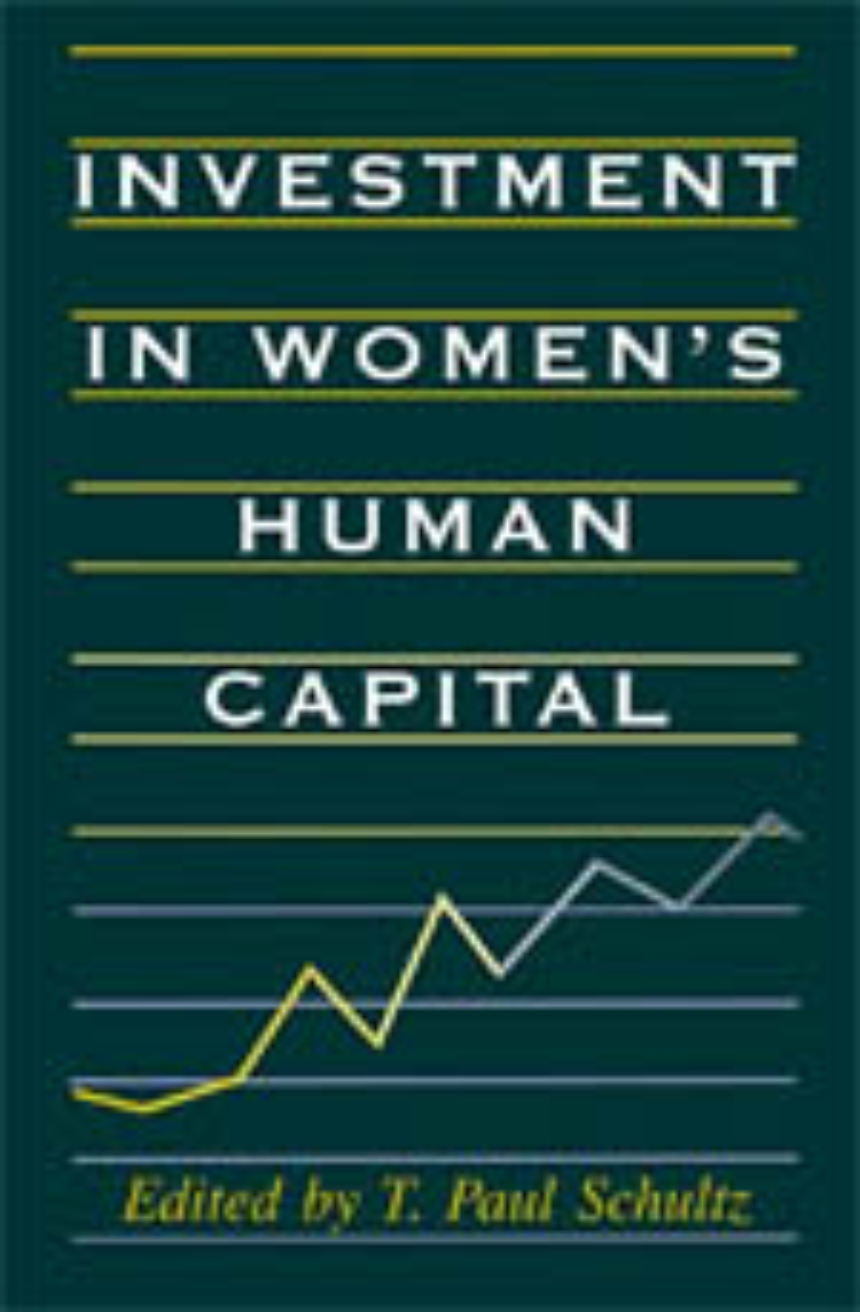Investment in Women’s Human Capital
How are human capital investments allocated between women and men? What are the returns to investments in women’s nutrition, health care, education, mobility, and training? In thirteen wide-ranging and innovative empirical analyses, Investment in Women’s Human Capital explores the nature of human capital distributions to women and their effect on outcomes within the family.
Section I considers the experiences of high-income countries, examining the limitations of industrialization for the advancement of women; returns to secondary education for women; and state control of women’s education and labor market productivity through the design of tax systems and the public subsidy of children.
The remaining four sections investigate health, education, household structure and labor markets, and measurement issues in low-income countries, including the effect of technological change on transfers of wealth to and from children in India; women’s and men’s responses to the costs of medical care in Kenya; the effects of birth order and sex on educational attainment in Taiwan; wage returns to schooling in Indonesia and in Cote d’Ivoire; and the increasing prevalence of female-headed households and the correlates of gender differences in wages in Brazil.
Section I considers the experiences of high-income countries, examining the limitations of industrialization for the advancement of women; returns to secondary education for women; and state control of women’s education and labor market productivity through the design of tax systems and the public subsidy of children.
The remaining four sections investigate health, education, household structure and labor markets, and measurement issues in low-income countries, including the effect of technological change on transfers of wealth to and from children in India; women’s and men’s responses to the costs of medical care in Kenya; the effects of birth order and sex on educational attainment in Taiwan; wage returns to schooling in Indonesia and in Cote d’Ivoire; and the increasing prevalence of female-headed households and the correlates of gender differences in wages in Brazil.
468 pages | 29 line drawings, 131 tables | 6 x 9 | © 1995
Economics and Business: Economics--Development, Growth, Planning
Table of Contents
Introduction by T. Paul Schultz
I: Overview and Experience of High-Income Countries
1: Investments in the Schooling and Health of Women and Men: Quantities and Returns
T. Paul Schultz
2: Obstacles to Advancement of Women during Development
Ester Boserup
3: The U-Shaped Female Labor Force Function in Economic Development and Economic History
Claudia Goldin
4: Public Policies and Women’s Labor Force Participation: A Comparison of Sweden, West Germany and the Netherlands
Siv Gustafsson
II: Labor Markets, Uncertainty, and Family Behavior
5: Women, Insurance Capital, and Economic Development in Rural India
Mark R. Rosenzweig
6: Information, Learning, and Wage Rates in Low-Income Rural Areas
Andrew D. Foster, Mark R. Rosenzweig.
III: Health
7: Gender and Life-Cycle Differentials in the Patterns and Determinants of Adult Health
John Strauss, Paul J. Gertler, Omar Rahman, Kristin Fox.
8: Quality of Medical Care and Choice of Medical Treatment in Kenya: An Empirical Analysis
Germano Mwabu, Martha Ainsworth, Andrew Nyamete.
IV: Education
9: Daughters, Education, and Family Budgets: Taiwan Experiences
William L. Parish, Robert J. Willis.
10: Gender Differences in the Returns to Schooling and in School Enrollment Rates in Indonesia
Anil B. Deolalikar
11: Educational Investments and Returns for Women and Men in Cote d’Ivoire
Wim P. M. Vijverberg
V: Household Structure and Labor Markets in Brazil
12: Poverty among Female-Headed Households in Brazil
Ricardo Barros, Louise Fox, Rosane Mendonca.
13: Gender Differences in Brazilian Labor Markets
Ricardo Barros, Lauro Ramos, Eleonora Santos.
References
Index
I: Overview and Experience of High-Income Countries
1: Investments in the Schooling and Health of Women and Men: Quantities and Returns
T. Paul Schultz
2: Obstacles to Advancement of Women during Development
Ester Boserup
3: The U-Shaped Female Labor Force Function in Economic Development and Economic History
Claudia Goldin
4: Public Policies and Women’s Labor Force Participation: A Comparison of Sweden, West Germany and the Netherlands
Siv Gustafsson
II: Labor Markets, Uncertainty, and Family Behavior
5: Women, Insurance Capital, and Economic Development in Rural India
Mark R. Rosenzweig
6: Information, Learning, and Wage Rates in Low-Income Rural Areas
Andrew D. Foster, Mark R. Rosenzweig.
III: Health
7: Gender and Life-Cycle Differentials in the Patterns and Determinants of Adult Health
John Strauss, Paul J. Gertler, Omar Rahman, Kristin Fox.
8: Quality of Medical Care and Choice of Medical Treatment in Kenya: An Empirical Analysis
Germano Mwabu, Martha Ainsworth, Andrew Nyamete.
IV: Education
9: Daughters, Education, and Family Budgets: Taiwan Experiences
William L. Parish, Robert J. Willis.
10: Gender Differences in the Returns to Schooling and in School Enrollment Rates in Indonesia
Anil B. Deolalikar
11: Educational Investments and Returns for Women and Men in Cote d’Ivoire
Wim P. M. Vijverberg
V: Household Structure and Labor Markets in Brazil
12: Poverty among Female-Headed Households in Brazil
Ricardo Barros, Louise Fox, Rosane Mendonca.
13: Gender Differences in Brazilian Labor Markets
Ricardo Barros, Lauro Ramos, Eleonora Santos.
References
Index
